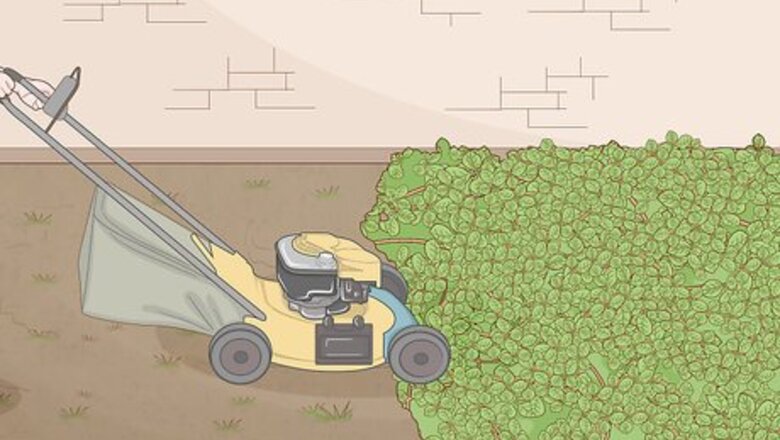
views
Using Natural Methods
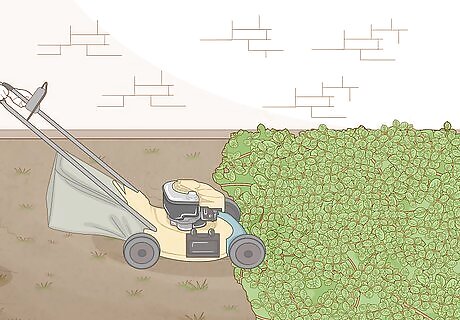
Mow down kudzu. In some cases, kudzu can be controlled by continual mowing. Mowing kudzu can be time consuming, but it is sometimes more effective than pesticides for eradicating the plants. You can use mowers or mechanical clippers to cut kudzu vines down to ground level. During growing season, you should cut down kudzu vines once every month. Eventually, the plant will become exhausted and cease to grow. Once you're done mowing down kudzu, it's important to remove all plant material after it's trimmed down. Kudzu plants can reroot and begin growing again if not removed. You can burn kudzu materials, feed them to local cows or goats, or place them in plastic bags and dispose of them at a local dump. Be consistent if you choose to cut kudzu root. One or two cuttings will do little to stop kudzu. You must exhaust the plants over a series of months or years for this method to be effective.
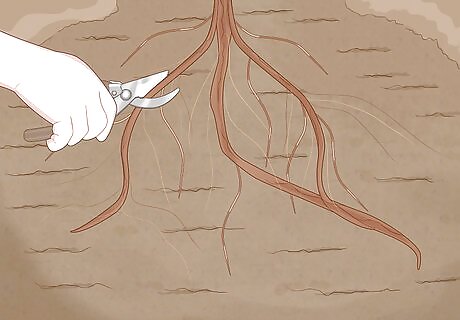
Dig up and remove the roots. It's also a good idea to dig up kudzu at the root. This is another time consuming, but effective, means of preventing kudzu from regrowing. You do not need to remove the entire root. You just need to remove the root crown, which is the portion of the root that kudzu grows out of. A shovel or pick axe are the best tools to use when removing the root crown. If you notice there are several smaller root crowns at the base of a kudzu vine, pruning shears may work well. To find the root crown, follow a kudzu vine until you find where it roots into the soil. If you dig slightly, you should see new buds stemming. This is the root crown. Cut into the soil just below this area to remove the crown. Make sure you remove all of the root crown. If you don’t, the kudzu can easily grow back where parts of the crown were left.
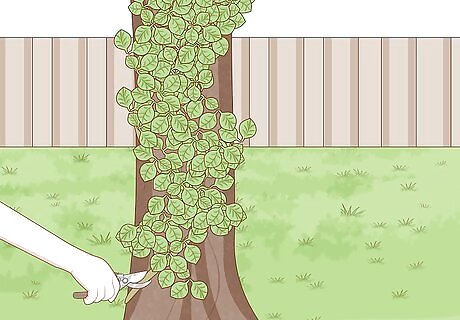
Cut kudzu vines off of small trees. If you notice kudzu growing on a tree, manually cut the kudzu off using pruning shears. Then, apply herbicide near the kudzu roots, at a safe distance from the sapling. If you're uncomfortable using herbicide, you can also dig up the roots of the kudzu.

Allow cattle or goats to graze on kudzu. If you have cattle or goats, you can allow your livestock to control kudzu plants. Cattle and goats should graze on kudzu and it is not harmful for these animals. Much like mowing, continual grazing will wear down kudzu to the point it stops growing.
Applying Herbicides

Choose the right herbicide for your needs. There are a variety of different herbicides on the market. Make sure you select one specifically designed to get rid of kudzu plants. You want something with the active ingredients glyphosate and triclopyr, as these chemicals are effective at killing kudzu. The following commercial products have been proven effective for the treatment of kudzu: Bayer Advanced Brush Killer Plus Concentrate Ortho Max Poison Ivy and Tough Brush Killer Concentrate Roundup Concentrate Poison Ivy Plus Tough Brush Killer Roundup Pro Roundup Pro Concentrate
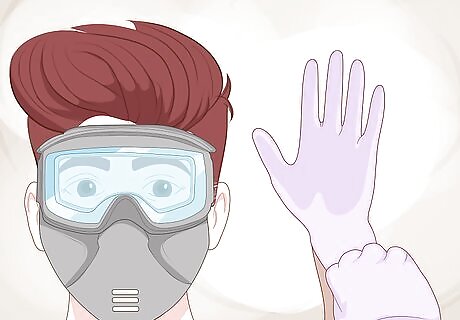
Use protective gear when applying herbicides. Herbicides can be dangerous to the bare skin. Make sure to wear protective gear, like safety goggles and protective gloves, before treating kudzu with herbicide. You should also read the instruction manual on any herbicide you purchase. Some herbicides must be diluted in water before use. The instruction manual will also provide you with useful information on how to safely apply your chosen herbicide.
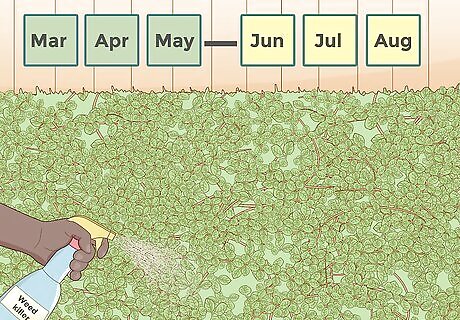
Apply herbicide in the spring and late summer. Spring is a great time to apply treatment because kudzu will be vulnerable from its winter dormancy. Treat the kudzu again in the late summer, and repeat the two treatments annually until the plant is dead. Keep in mind that the plant won’t die from a single treatment.
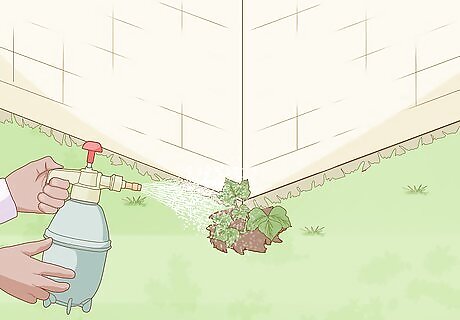
Spot spray small outbreaks. You may have a small kudzu outbreak. A tiny amount of kudzu may be creeping up on a fence, for example. As you want to limit the use of herbicide as much as you can, do not aggressively treat small outbreaks. Instead, spot spray with a backpack sprayer. Spray towards the ground from which the kudzu spreads. You can also use spot treatment as a follow up treatment after you've targeted large patches of kudzu.
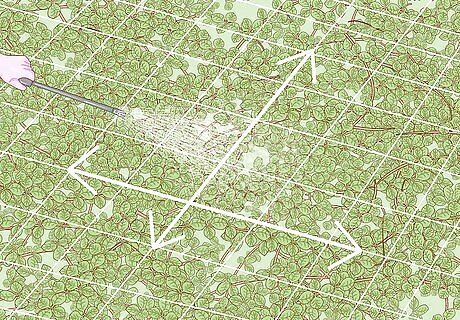
Spray open patterns in a crosshatch pattern. In the event you have large patches of kudzu growing on the ground, you'll want to spray in a crosshatch pattern. A crosshatch pattern is marked by a series of intersecting parallel lines. Spray roughly half the solution in one direction in straight lines. Then, spray and half the solution in the other direction in lines perpendicular to the first.
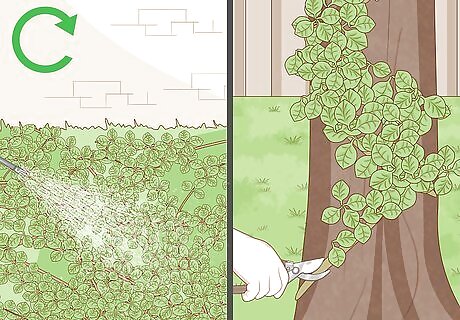
Do follow up treatments. Kudzu is rarely eradicated with a single treatment. In order to completely destroy kudzu, you need to do several treatments. There is no herbicide available that will successfully remove kudzu in a single treatment. For younger, smaller roots, a few rounds of treatment may be enough to eliminate kudzu. For larger, older plants, you may need to treat kudzu several times a year for a few years to eliminate the plant.
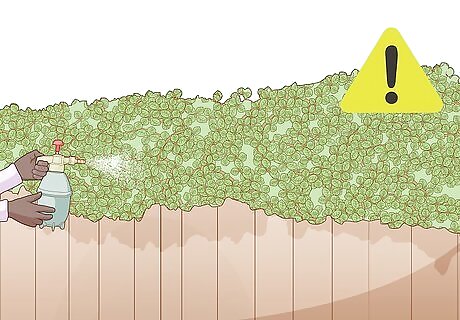
Do not use herbicides on kudzu invading trees or other plants. Kudzu often creeps up trees or individual plants. You should limit herbicide treatments to kudzu growing on level ground, or creeping up a manmade object like a fence. If you spray herbicide on a plant like a tree, the herbicide will end up harming this plant as well as the kudzu.
Avoiding Pitfalls Regarding Kudzu Removal
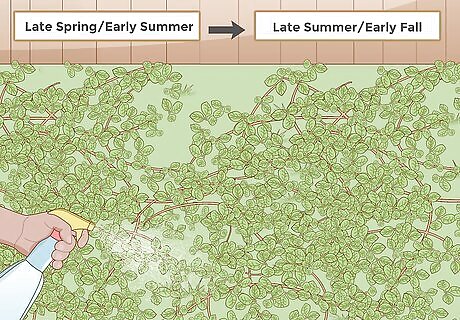
Remove kudzu during the correct times of year. Regardless of the method you use, you want to make sure you remove kudzu at the right times of the year. Kudzu should be treated several times throughout the year. In late spring or early summer, begin your kudzu treatment once the leaves have fully expanded. New kudzu will usually emerge from the first kudzu plants. This should be treated again in later summer or early fall to prevent a reoccurrence.
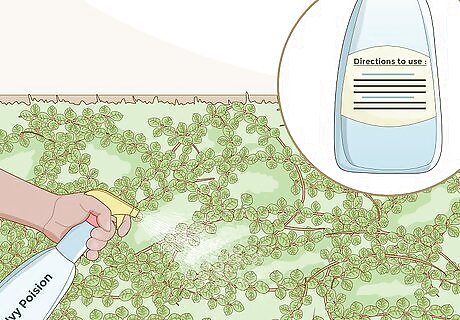
Use herbicide conservatively. If you choose to use herbicide to treat kudzu, be careful. Only use herbicide in select areas and only apply the recommended amount. Read instruction manuals that come with your herbicides carefully, especially the safety instructions. Keep away from animals and children. Chemicals in herbicide can be toxic if ingested or touched.

Make sure to use mild herbicides in residential or environmentally sensitive areas. If you're working in residential areas, make sure you choose mild herbicides. You also want to make sure use of herbicides is permitted in any area you choose to spray. You can contact your local Department of Natural Resources for more information.











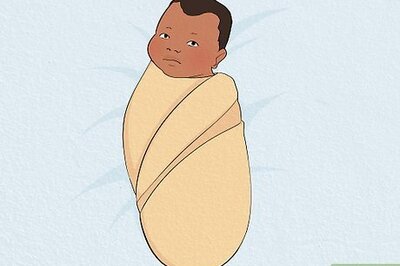



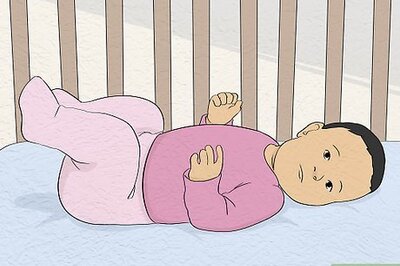


Comments
0 comment